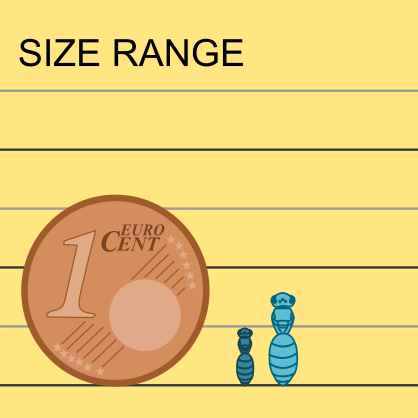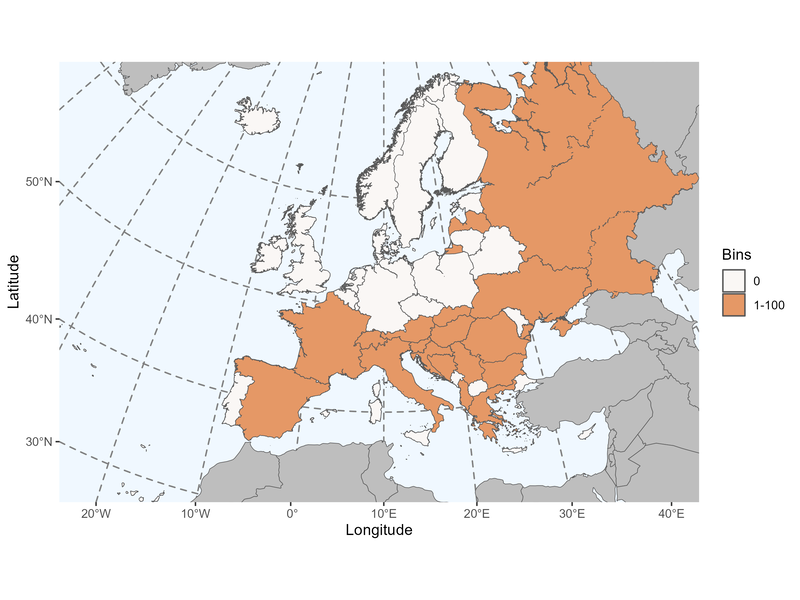Author: Robertson, 1901
|
Type species: Epeolus concavus Cresson, 1878, by original designation.
Synonyms: Synepeolus Cockerell, 1921; |
Clade: Anthophila
Family: Apidae Subfamily: Nomadinae Tribe: Epeolini |
|
Distinctive traits
|
Pictures of distinctive traits
(Sorry, there is no picture available at this time. If you have some and would like to become a contributor to IDmyBee, please contact us.) |
Morphologically close genera, and how to distinguish them:
Epeolus species have submarginal cells 2 and 3 of equivalent size, the nervulus is arched but not bent at right angle, apical margin of sternite 3 doesn't have a frange of hairs, the mandible often has a preapical tooth.
Nomada species have a marginal cell pointed following the wing's anterior margin.
- Triepeolus - Epeolus
Epeolus species have submarginal cells 2 and 3 of equivalent size, the nervulus is arched but not bent at right angle, apical margin of sternite 3 doesn't have a frange of hairs, the mandible often has a preapical tooth.
- Triepeolus - Nomada
Nomada species have a marginal cell pointed following the wing's anterior margin.
General comments on Triepeolus species identification
Triepeolus is represented by only one species in Europe, but the genus identification has to be handled with care due to the similarity with Epeolus species.
Triepeolus is represented by only one species in Europe, but the genus identification has to be handled with care due to the similarity with Epeolus species.
Triepeolus species found in Europe (Ghisbain et al. 2023)
Triepeolus tristis (Smith, 1854)
Triepeolus tristis (Smith, 1854)
Online resources:
Atlas hymenoptera (France & Belgium)
Discover Life (World)
WestPalBees (West Palearctic)
Atlas hymenoptera (France & Belgium)
Discover Life (World)
WestPalBees (West Palearctic)
Page contributors:
You noticed a mistake? You have a suggestion to improve this page?
Don't keep it to yourself, contact us and become a contributor to IDmyBee!
References used to write this page:
- Adrien Perrard (Dec. 2023)
- Adrien Perrard (Dec. 2019)
You noticed a mistake? You have a suggestion to improve this page?
Don't keep it to yourself, contact us and become a contributor to IDmyBee!
References used to write this page:
- Ghisbain, G., Rosa, P., Bogusch, P., Flaminio, S., Le Divelec, R., Dorchin, A., Kasparek, M., Kuhlmann, M., Litman, J., Mignot, M., Müller, A., Praz, C., Radchenko, V.G., Rasmont, P., Risch, S., Roberts, S.P.M., Smit, J., Wood, T.J., Michez, D. & Reverte, S. (2023). The new annotated checklist of the wild bees of Europe (Hymenoptera: Anthophila). Zootaxa, 5327(1), 1-147.
- Michener, C.D. 2007. The Bees of the World, 2nd Edition. The John Hopkins University Press, Baltimore.
- Michez D., Rasmont P., Terzo, M., Vereecken, N. 2019. Abeilles d'Europes. Hymenoptères d'Europes, Volume 1. N.A.P. Editions.
- Nieto, A., Roberts, S. P., Kemp, J., Rasmont, P., Kuhlmann, M., García Criado, M., ... & Michez, D. 2014. European red list of bees. Luxembourg: Publication Office of the European Union, 98. (IUCN 2014)
- Rasmont, P., Devalez, Jelle, Pauly, A., Michez, D. & Radchenko, V.G. 2017. Addition to the checklist of IUCN European wild bees (Hymenoptera: Apoidea). Annales de la Société entomologique de France 53: 17-32.



